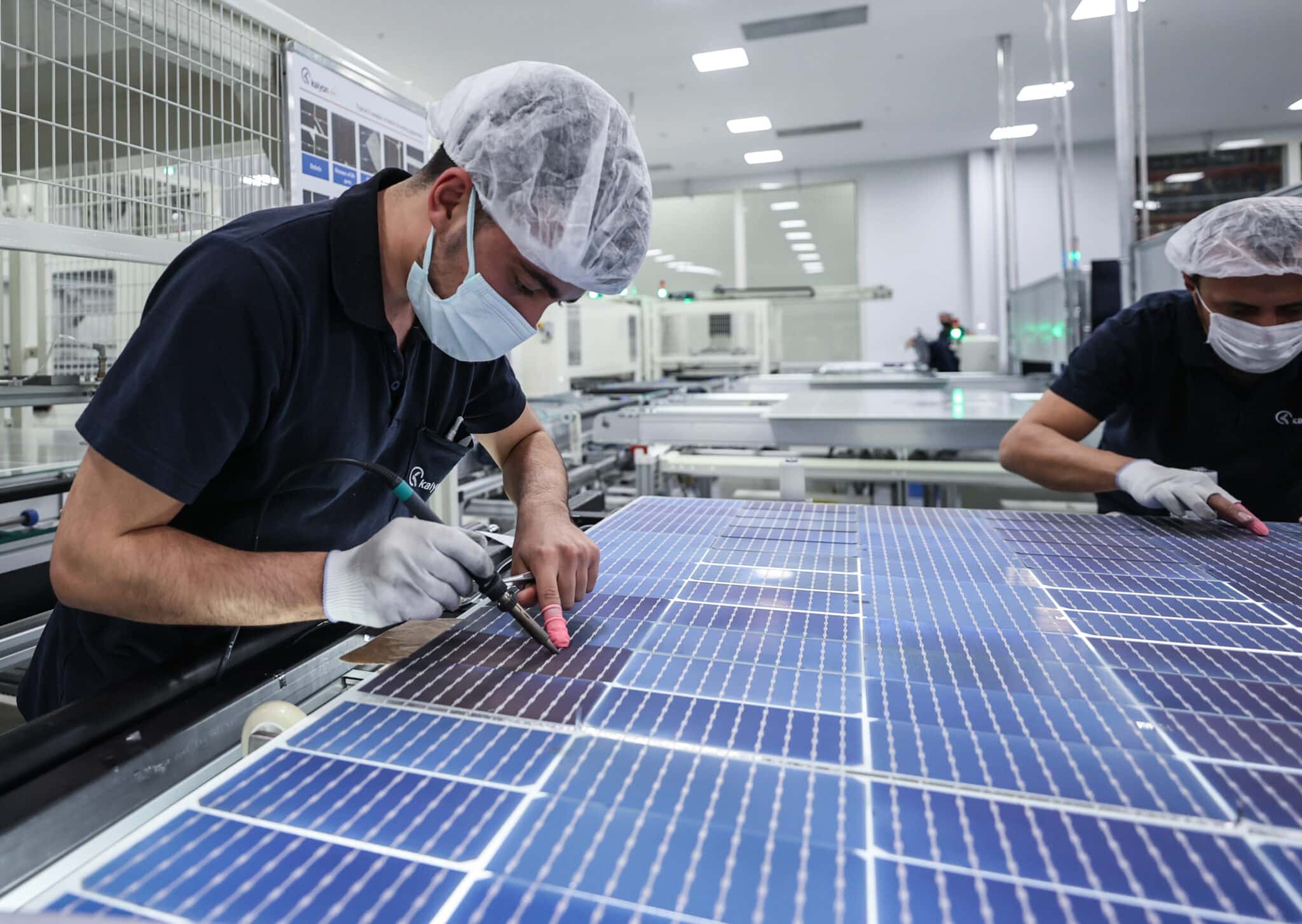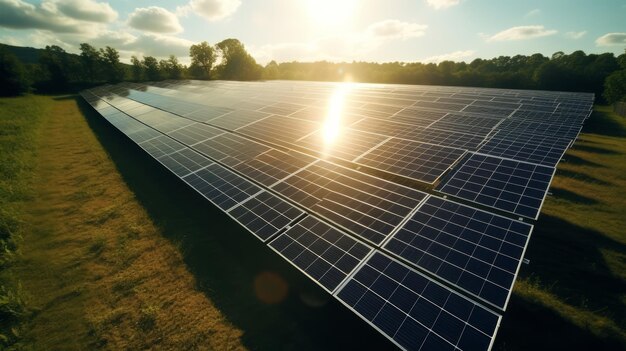
The Environmental Impact of Solar Panel Production: Unpacking the ‘Green’ Story
Solar energy shines as a beacon of hope in our quest for a cleaner, more sustainable future. With sunlight as its fuel, it promises endless, emission-free power, a stark contrast to the smog and greenhouse gases churned out by fossil fuels. But while the operation of solar panels is undeniably clean, have you ever wondered about the journey they take before they even start generating electricity?
Just like any manufactured product, solar panels have a lifecycle that involves raw materials, factories, transportation, and eventual disposal. Understanding the environmental footprint of solar panel production is crucial for a complete picture of this vital renewable technology. It’s not about discrediting solar, but about acknowledging the complexities and driving towards even greener solutions.
Let’s dive deep into the often-overlooked environmental impacts of bringing solar panels to life.
The Anatomy of a Solar Panel: What’s Inside?
Before we talk about production impacts, let’s quickly break down what a typical solar panel is made of. Understanding these components helps us identify where environmental impacts occur:
- Photovoltaic (PV) Cells: These are the heart of the panel, usually made from highly purified silicon. These cells convert sunlight into electricity.
- Glass Front: Protects the cells from weather and impact.
- Encapsulant: A clear material (like EVA) that seals the cells between the glass and backsheet, protecting them from moisture and dirt.
- Backsheet: A durable, weather-resistant polymer layer on the back.
- Aluminum Frame: Provides structural integrity and allows for mounting.
- Junction Box & Wiring: Contains electrical connections for the panel to work.
1. Raw Material Extraction: Digging for Sunlight’s Ingredients
The first step in any manufacturing process is sourcing materials, and solar panels are no exception. This stage carries significant environmental implications.
a. Silicon: The Core Material
Most solar panels today are made from crystalline silicon.
- Source: Silicon is abundant, found in sand and quartz.
- Impact: Extracting quartz itself isn’t highly destructive, but transforming it into the high-purity "polysilicon" needed for solar cells is incredibly energy-intensive. It involves heating quartz to extremely high temperatures (over 1,600°C or 2,900°F) in electric arc furnaces. If this energy comes from fossil fuels, it contributes to greenhouse gas emissions.
b. Metals: Frames, Wires, and Connections
- Aluminum: Used for the panel frame. Aluminum mining (bauxite) and smelting are energy-intensive processes that can lead to habitat destruction, water pollution, and significant carbon emissions.
- Copper: Essential for wiring and electrical connections. Copper mining can involve large-scale land disturbance and water use, and generate significant waste rock.
- Silver: Used in the thin "fingers" on the solar cells to collect electricity. Silver mining, like other metal mining, can have localized environmental impacts.
- Trace Metals (e.g., Indium, Gallium, Tellurium, Cadmium): While less common in standard silicon panels, some thin-film solar technologies use these elements. Their extraction can be associated with:
- Resource Depletion: Some are rarer elements.
- Toxic Byproducts: Mining and processing can release toxic substances into the environment.
- Ethical Concerns: Sourcing can sometimes be linked to conflict minerals, though this is less prevalent in the mainstream solar industry compared to some electronics. (Note: Cadmium is a known toxic heavy metal, but its use in solar is tightly regulated and often encapsulated, reducing direct risk unless panels are improperly disposed of).
2. The Manufacturing Process: From Raw to Ready
Once materials are extracted, they head to factories for processing and assembly. This stage involves complex chemical and energy-intensive steps.
a. Energy Consumption
- High Temperatures: Transforming raw silicon into solar-grade wafers requires immense heat, consuming a lot of electricity.
- Cleanroom Environments: PV cell manufacturing often takes place in highly controlled "cleanroom" environments, which are energy-intensive to maintain.
- Impact: The carbon footprint of a solar panel largely depends on the energy mix used by the manufacturing facilities. If factories rely on coal-fired power plants, the panel’s embodied carbon (the emissions from its production) will be higher.
b. Chemical Use and Pollution
- Etching & Cleaning: Wafers and cells undergo various chemical baths for cleaning, etching, and doping (adding impurities to make them conductive). These chemicals include:
- Hydrofluoric Acid: Highly corrosive and toxic.
- Caustic Soda (Sodium Hydroxide): Strong base, corrosive.
- Solvents: Used for cleaning.
- Impact: Without proper treatment, wastewater containing these chemicals can pollute local water sources. Air emissions from volatile organic compounds (VOCs) and other gases can also occur. Modern facilities, however, employ sophisticated wastewater treatment and air filtration systems to mitigate these risks.
c. Water Usage
- Cooling & Cleaning: Significant amounts of water are used throughout the manufacturing process for cooling equipment and rinsing wafers and cells.
- Impact: In water-stressed regions, this demand can put a strain on local water supplies.
d. Waste Generation
- Silicon Slurry: During the wafer slicing process, a significant amount of silicon is lost as a slurry (a mix of silicon dust and cutting fluid).
- Broken Cells & Glass: Imperfect or broken cells and glass also contribute to waste.
- Chemical Sludge: Byproducts from chemical treatments.
- Impact: Landfilling these materials can be problematic, especially if they contain hazardous residues. Recycling efforts are improving but are not yet universal.
3. Transportation and Logistics: The Global Footprint
Solar panel components and finished products often travel vast distances from extraction sites to factories and then to consumers worldwide.
- Long Supply Chains: Raw materials might be mined in one country, processed into silicon in another, manufactured into cells in a third, assembled into panels in a fourth, and then shipped to a fifth for installation.
- Fuel Consumption: This global movement relies heavily on fossil fuels (ships, trucks, trains), contributing to greenhouse gas emissions and air pollution.
- Packaging Waste: Panels are often heavily packaged to prevent damage during transit, leading to significant amounts of plastic, wood, and cardboard waste.
4. End-of-Life: What Happens When the Sun Sets on a Panel?
Solar panels are designed to last 25-30 years, but eventually, they will need to be decommissioned. This "end-of-life" stage presents a growing environmental challenge.
a. Landfill Concerns
- Hazardous Materials: While modern panels have largely phased out heavy metals like lead and cadmium (except in some niche thin-film technologies), panels still contain materials like silver, copper, and glass that can be valuable if recycled, but problematic if landfilled.
- Bulk Waste: The sheer volume of panels reaching end-of-life in the coming decades poses a significant waste management challenge if not properly addressed.
b. Recycling Challenges
- Complex Composition: Solar panels are made of multiple layers of different materials (glass, silicon, plastic, metals) bonded together, making them difficult and costly to separate and recycle effectively.
- Economic Viability: The current market value of recycled materials from panels often doesn’t outweigh the cost of disassembly and processing, making it less economically attractive than simply discarding them.
- Limited Infrastructure: Dedicated solar panel recycling facilities are still relatively scarce, though their numbers are growing, especially in Europe.
c. Current Recycling Efforts
- PV Cycle: A non-profit organization in Europe leading voluntary take-back and recycling schemes.
- Specialized Facilities: Companies are developing innovative techniques to recover valuable materials like silicon, silver, and copper. These methods often involve thermal, mechanical, and chemical processes.
- Policy Push: Some regions (like the EU) are implementing Extended Producer Responsibility (EPR) laws, requiring manufacturers to be responsible for the recycling of their products.
Putting It In Perspective: The Net Environmental Benefit
It’s easy to get bogged down by the production impacts, but it’s crucial to put them into context.
- Energy Payback Time (EPBT): This is the time it takes for a solar panel to generate the amount of energy that was used to produce it. For modern solar panels, the EPBT is typically 1 to 4 years. Considering a panel’s lifespan of 25-30 years, this means it generates 6 to 29 times more clean energy than was consumed during its entire lifecycle (production, operation, and disposal).
- Compared to Fossil Fuels: Even with the environmental costs of production, solar panels generate significantly less lifecycle greenhouse gas emissions than electricity from coal, natural gas, or oil.
- Continuous Improvement: The solar industry is constantly working to reduce its manufacturing footprint through:
- More efficient processes (less energy, less waste).
- Cleaner energy sources for manufacturing (e.g., factories powered by renewables).
- Development of less material-intensive solar technologies.
- Improved recycling technologies and infrastructure.
Towards a Greener Solar Future: Solutions and Innovations
The challenges in solar panel production are not insurmountable. The industry is actively pursuing solutions to make solar truly sustainable from "cradle to grave."
- Sustainable Manufacturing Practices:
- Renewable Energy in Factories: Shifting manufacturing plants to run on solar, wind, or other renewable energy sources dramatically reduces the embodied carbon of panels.
- Closed-Loop Systems: Implementing processes that reuse water and chemicals, minimizing waste.
- Energy Efficiency: Optimizing factory operations to reduce overall energy consumption.
- Material Innovation:
- Less Toxic Materials: Research into alternative solar cell materials (e.g., perovskites, organic photovoltaics) that require less energy to produce or use more abundant, less toxic elements.
- Reduced Material Use: Designing thinner cells and panels that use less silicon and other materials.
- Enhanced Recycling & Circular Economy:
- Design for Disassembly: Designing panels from the outset with easier recycling in mind.
- Advanced Recycling Technologies: Investing in R&D for more efficient and cost-effective methods to recover high-value materials.
- Policy Support: Government policies and incentives that promote recycling and extended producer responsibility.
- Second Life Applications: Exploring ways to repurpose older panels for less demanding applications before full recycling.
Conclusion: A Brighter, More Responsible Path Forward
The environmental impact of solar panel production is a complex but important topic. It highlights that no technology, no matter how "green" its end product, is entirely without a footprint during its creation. However, this understanding doesn’t diminish solar’s crucial role in combating climate change.
Instead, it empowers us to demand and support a solar industry that is not only clean at the point of use but also striving for maximum sustainability throughout its entire lifecycle. By embracing more efficient manufacturing, cleaner energy in factories, and robust recycling programs, we can ensure that solar energy truly paves the way for a brighter, more responsible future for our planet. Choosing solar is still one of the most impactful steps we can take for a sustainable future, and with ongoing innovation, it’s getting cleaner every day.



Post Comment